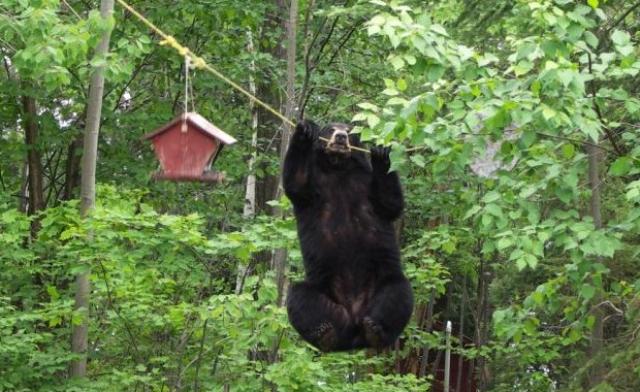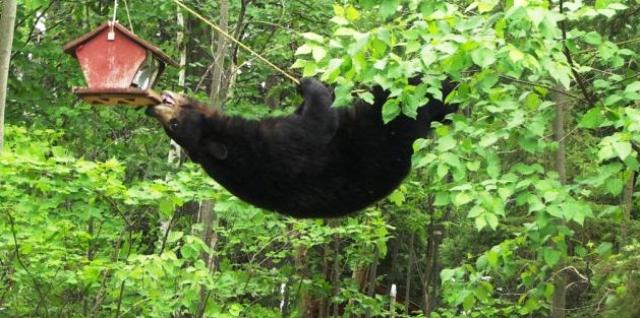Why I love dogs.
Twin Baby Boys Have A Conversation
58 Years Of US Intervention In Iran
For a detailed list, here’s a timeline of US involvement in Iran from St. Peace:
- 1953 – Under orders from President Eisenhower, the CIA organized a military coup that overthrew Iran’s democratically elected Prime Minister Mohammed Mossadegh. Britain, unhappy that Iran nationalized its oil industry, came up with the idea for the coup and pressed the United States to mount a joint operation to remove Mossadeqh.
For years, the U.S. denied its involvement in the 1953 coup, but in March 2000, then Secretary of State Madeline Albright admitted, “In 1953 the United States played a significant role in orchestrating the overthrow of Iran’s popular Prime Minister, Mohammed Mossadeqh. The Eisenhower Administration believed its actions were justified for strategic reasons; but the coup was clearly a setback for Iran’s political development. And it is easy to see now why many Iranians continue to resent this intervention by America in their internal affairs.”
- 1953 to 1979 – Following the coup, the U.S installed Mohammad Reza Shah Pahlavi , and the thriving democracy that existed in Iran was crushed. The Shah led 25 years of tyrannical rule (supported by the CIA) that resulted in the killing of thousands of Iranians who opposed the U.S. puppet government. On the economic front, the Shah denationalized Iran’s oil industry, 60% of which went to American firms.
- 1979 – U.S.-backed Shah of Iran forced to leave the country after widespread demonstrations and strikes. Islamic religious leader Ayatollah Khomeini returns from exile and takes effective power. Sixty-six hostages taken by students at the U.S. embassy in Tehran. The students justified taking the hostages as retaliation for the admission of the Shah into the U.S., and demanded the Shah be returned to Iran for a trial. The new Iranian regime believed the Shah was in the U.S. so that the U.S. could carry out another coup d’etat in Iran; the U.S. claimed he had come there only to seek medical attention. The Shah was given refuge and Iranians demanded his extradition to Iran to face justice. The U.S. rejected Iran’s request and the hostage taking ensued.
- 1980 – Iraq invades neighboring Iran with the approval and the assistance of the United States. The war lasts eight years and kills hundreds of thousands of Iraqis and Iranians. Secret U.S. military mission to rescue hostages in Iran ends in disaster in sandstorm in central Iranian desert. Exiled Shah dies of cancer in Egypt, but hostage crisis continues. Iran suffered heavy casualties from Saddam’s chemical weapons, most of which were provided by the U.S.
- 1981 – Last 52 U.S. hostages freed in January after intense diplomatic activity. Their release comes a few hours after U.S. President Jimmy Carter leaves office. They had been held for 444 days.
- 1982 to 1983 – As Iranian forces gained the upper hand on the battlefield with Iraq, the U.S. launched another covert operation to arm and aid Saddam. It began clandestinely to supply Saddam with satellite intelligence on Iran’s deployments. Weapons were also sent via CIA fronts in Chile and Saudi Arabia directly to Baghdad. Between 1986 and 1989, some seventy-three transactions took place that included bacterial cultures to make weapons-grade anthrax, advanced computers, and equipment to repair jet engines and rockets.
- 1985 to 1986 – Iran-Contra Affair: U.S. holds secret talks with Iran and makes weapons shipments, allegedly in exchange for Iranian assistance in releasing U.S. hostages in Lebanon. With revelations that profits were illegally channeled to Nicaraguan rebels, this creates the biggest crisis of Ronald Reagan’s presidency.
- 1987 – Following the mining of a U.S. Navy frigate, U.S. forces engage in series of encounters with Iranian naval forces, including strikes on Gulf oil platforms. The engagement was code named “Operation Praying Mantis”. The battle, the largest between surface forces since World War II, sank two Iranian warships and as many as six armed speedboats.
- 1988 – On patrol in the Persian Gulf, the USS Vincennes shot down an Iranian passenger jet that it had mistaken for a hostile Iranian fighter aircraft. U.S. Navy Captain Will C. Rogers III ordered a single missile fired from his warship, which hit its target and killed all 290 people aboard the commercial Airbus.
- 1995 – President Clinton imposes oil and trade sanctions on Iran for alleged sponsorship of “terrorism”, seeking to acquire nuclear arms and hostility to the Middle East peace process.
- 2002 to 2003 – U.S. President George W Bush, in his State of the Union address, describes Iran as part of an “axis of evil”. The U.S. accuses Iran of seeking to develop a secret nuclear weapons program and refuses to rule out the “military option” in dealing with Iran.
- 2005 – 2006 – The United States is openly attempting to “promote democracy” in Iran by budgeting $3 million for various Iranian groups. Iran’s ambassador to the United Nations called the plan “a clear violation” of a 1981 U.S-Iranian agreement in which the U.S. pledged “not to intervene directly or indirectly, politically or militarily in Iran’s internal affairs.”
Long story short: they don’t hate us for our freedom, they hate us for destroying theirs.
Dexterous Bear Gets The Bird Feeder
Confirm The Kill
One Man Band Plays ‘Billie Jean’
When Hamsters Get Greedy
is there anything cuter than a hamster trying to stuff an insurmountable amount of food into their cheeks? The answer is yes, but even if, these pictures are pretty darn adorable:





And of course, the infamous baby hamster with corn:

And if who can forget Smoke, the amazing food storing hamster:
I Be All Day Rollin’ In My Whip
Cleveland Is The Reason by Kid Cudi






